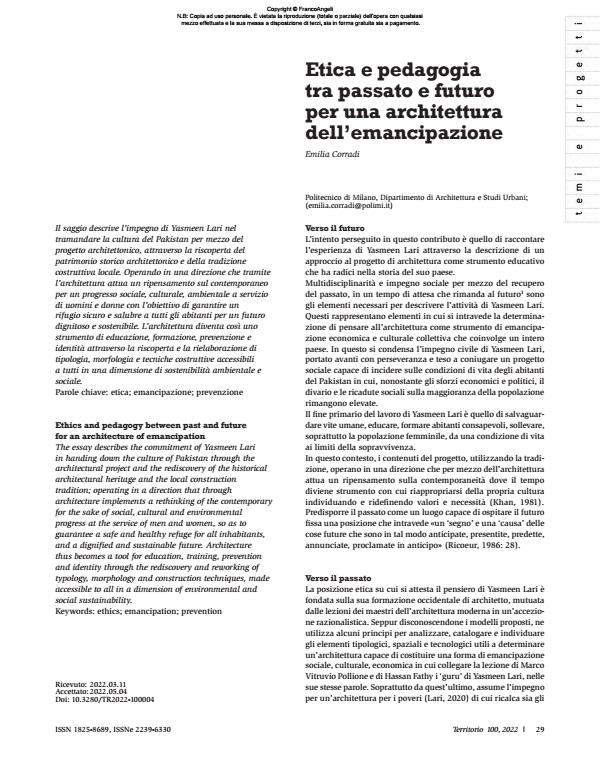Ethics and pedagogy between past and future for an architecture of emancipation
Journal title TERRITORIO
Author/s Emilia Corradi
Publishing Year 2022 Issue 2022/100
Language Italian Pages 13 P. 29-41 File size 798 KB
DOI 10.3280/TR2022-100004
DOI is like a bar code for intellectual property: to have more infomation
click here
Below, you can see the article first page
If you want to buy this article in PDF format, you can do it, following the instructions to buy download credits

FrancoAngeli is member of Publishers International Linking Association, Inc (PILA), a not-for-profit association which run the CrossRef service enabling links to and from online scholarly content.
The essay describes the commitment of Yasmeen Lari in handing down the culture of Pakistan through the architectural project and the rediscovery of the historical architectural heritage and the local construction tradition; operating in a direction that through architecture implements a rethinking of the contemporary for the sake of social, cultural and environmental progress at the service of men and women, so as to guarantee a safe and healthy refuge for all inhabitants, and a dignified and sustainable future. Architecture thus becomes a tool for education, training, prevention and identity through the rediscovery and reworking of typology, morphology and construction techniques, made accessible to all in a dimension of environmental and social sustainability.
Keywords: ethics; emancipation; prevention
Emilia Corradi, Etica e pedagogia tra passato e futuro per una architettura dell’emancipazione in "TERRITORIO" 100/2022, pp 29-41, DOI: 10.3280/TR2022-100004